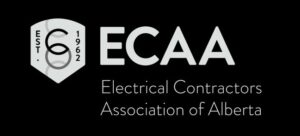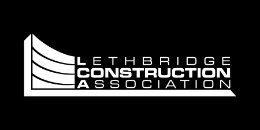The Six Major Components of Structured Cabling Explained

Cabling for voice and data communications systems was significantly less sophisticated decades ago than it is now. To protect the cable, most systems employed two- or four-pair copper wire enclosed in a binder. Connections were frequently made by removing the end of the wire to reveal the copper conductor. This was then connected to a series of connections, known as a connecting block, which linked physical devices to a switching equipment, such as a PBX system.
In the late 1970s and early 1980s, as digital transmission became more prevalent in practically all forms of voice and data communications equipment, new types of cabling and connections arose. The goal was to simplify the process of connecting devices to their core system, hence speeding up the process of constructing a wired infrastructure for both voice and data devices.
What are the Benefits of Structured Cabling?
Structured cabling considerably simplifies cable systems’ installation, debugging, and maintenance. The uniformity of all hardware components and cable types saves money. It also saves time during installation because the connections and wiring are substantially simplified. The ANSI/TIA-568 standard may be used for almost any type of residential or business wiring requirement.
The six subsystems of structured cabling
1. Entrance Facilities (EF)
Telecom facilities entering a business or dwelling from the outside – whether from a local service carrier or a private network – use a conduit to pass through an aperture in the outer wall. This cabling enters a room containing additional devices such as network connection points, patch panels, equipment racks, hardware connectors, power supply, grounding, shielding, and lightning protection devices.
2. Equipment Room (ER)
All of the servers, PBXs, patch panels, network switches, and so on would be housed in the equipment room. This is the area where the power from the entry facilities is linked to the appropriate equipment. The equipment room should be dust-free and temperature/humidity-controlled due to the sensitivity of the devices. The equipment maker or seller might provide advice on the air conditions in the equipment room. A poorly maintained environment might impact the performance and life of the gadgets.
3. Backbone Cabling
The backbone of structured cabling infrastructure is the set of cables that carry data and connectivity signals to the various rooms of a building or residence.
4. Horizontal Cabling
In a structured cabling system, horizontal cabling links the telecommunications room or enclosure to outlets or workspaces on the property. This type of cabling is often placed when the structure is first erected.
Horizontal cabling is often unshielded twisted-pair cable, abbreviated as UTP. To minimize electromagnetic interference, specific rules dictate how long the cables should be and where the horizontal cabling should be located. Horizontal cabling is similar to “last mile” cabling before reaching a computer in a work location.
5. Work Area / Work Station (WAN) Cabling
The cables to end devices, such as workstations and laptops, are called work area/workstation cables. Work area/workstation cables are typically low-speed (up to 10 Mbps) and support various devices. The same kind of cable is generally used for equipment located in the central office and in the “office” of the business or residence.
6. Telecommunications Room (TR)
The termination points for your system’s backbone cable and horizontal cablings, such as fibre jumpers or patch cords, are housed in a telecommunications room (TR) or enclosure (TE).
It is vital to remember that a telecommunication enclosure serves a smaller area than a telecommunication room. Each level of a building should also include one telecoms room.
Conclusion
Structured cabling is a relatively simple yet vital part of any electronic or digital system. The standardized infrastructure of a cabling system provides a foundation for all of the system’s equipment, cabling, and connectivity. If there are problems with the system, troubleshooting is greatly simplified by the standardized cabling system.
Finding the right electrical contractor in the Lethbridge area can be a tough decision. However, D.A. Electric has always been proud to serve and provide an extremely high level of electrical services and best quality products and materials available to their valued customers within Lethbridge and Southern Alberta communities’ commercial, agriculture and industrial sectors with offices in Medicine Hat and Pincher Creek.
To contact us and book a consultation, call us or fill out the form provided, and a D.A Electric Ltd. representative will contact you within 24 hours to confirm a booking for your visit.




